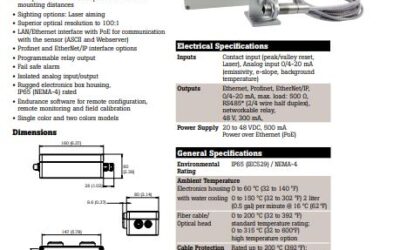How To Wire a Temperature Controller – Part 1
This video tutorial will discuss and review the most common output signal wiring configurations for a Heat Only Temperature Control Loop. The typical outputs are AC Logic (Both Relay and Triac), DC Logic, DC Analog, and Valve Actuator control.
AC Logic (Both Relay and Triac) The relay output type is just a mechanical switch that will switch 120 or 240 VAC when the controller tells it to turn on or off. While the relay output is very basic and simple,if your process turns on or off a lot the relay can wear out over time. Typically relay outputs are connected to mechanical contactors, mercury relays or SSR with a Line Voltage Command Signal Input.
The triac output type is a AC style solid state switch. A triac works very similar to a relay but instead of being a mechanical switch it is a solid state device. It can turn on and off thousands of times more than a mechanical relay with no wear because no moving parts.
In the wiring diagram that you see you will note that we are using a Eurotherm 2216e temperature controller and a Eurotherm TE10S power controller with an AC input command signal. The wires noted in RED are the typical wiring configuration for this method. First you wire your line voltage to terminal 1A of the temperature controller. Next terminal 1B is the switched line voltage signal thru either the relay contact or Triac in the temperature controller. This wire from terminal 1B will be wired to the positive side of the input command on the power controller which happens to be terminal 5 in this example. Next to complete this AC circuit you will need to wire terminal 6 from the power controller back to neutral. Now when the temperature controller turns on or off the relay or triac it will pass the line voltage signal to the input command of the power controller and the power controller will turn on to allow current flow to the heating element.
DC Logic: The DC logic output type is a DC style solid state switch. Because of mercury being now considered hazardous waste and frowned upon by industry many clients are now using SSR’s instead of mercury contactors or mechical relays. The SSR is turned on with a 3 to 32 VDC signal. The DC logic output provides a 12 VDC output to turn the SSR on and off. The SSR can be pulsed extremely fast making a good choice for proportional control of your heating application. In the wiring diagram that you see you will note that we are using a Eurotherm 2216e temperature controller and a Eurotherm TE10S power controller with a DC Logic input command signal. The wires noted in RED are the typical wiring configuration for this method. First you wire your terminal 1A (+) of the temperature controller to terminal 5 (+) of the power controller. Next terminal 1B (-) of the temperature controller to terminal 6 (-) of the power controller. This completes the output wiring for this style of control. Now when the temperature controller turns on or off the DC Logic output produces a 12VDC signal to the input command of the power controller and the power controller will turn on to allow current flow to the heating element.



